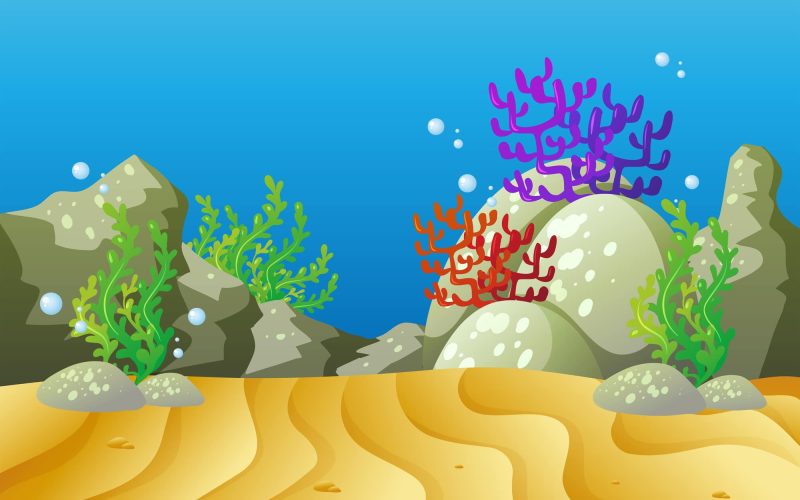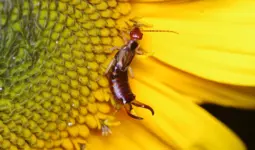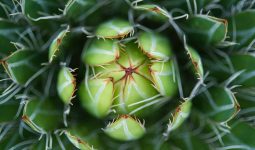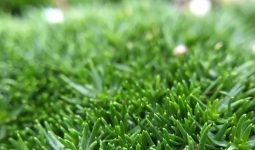Life in the ocean is indeed more than we know. There is much more to the ocean than it is a water body.
The vastness of the world’s oceans conceals a fantastic array of life forms, many of which are said to be plants.
The types of plants in the ocean are often overlooked in favor of the more visible marine animals.
These plants in the ocean play a crucial role in maintaining the delicate balance of marine ecosystems, which is why this essay will delve into the fascinating world of ocean plants, highlighting the various types and their unique adaptations to life in the sea.
There are many types of plants in the ocean. Some of the most common types of ocean plants include seaweed, kelp, seagrass, and so much more.
In addition to these common types of ocean plants, several other plants can be found in the ocean.
Some of these plants are very small and can only be seen using a microscope, while others are large enough to be seen from a distance.
Some of the other types of ocean plants include diatoms, dinoflagellates, and coccolithophores.
These plants are vital for many reasons, including their role in the ocean food chain. Also, their ability to produce oxygen through photosynthesis.
So, Whether you are a marine biologist or simply someone who enjoys spending time near the ocean, it is essential to understand the different types of ocean plants and their importance.
Now, here are the types of plants in the ocean.
1. Phytoplankton
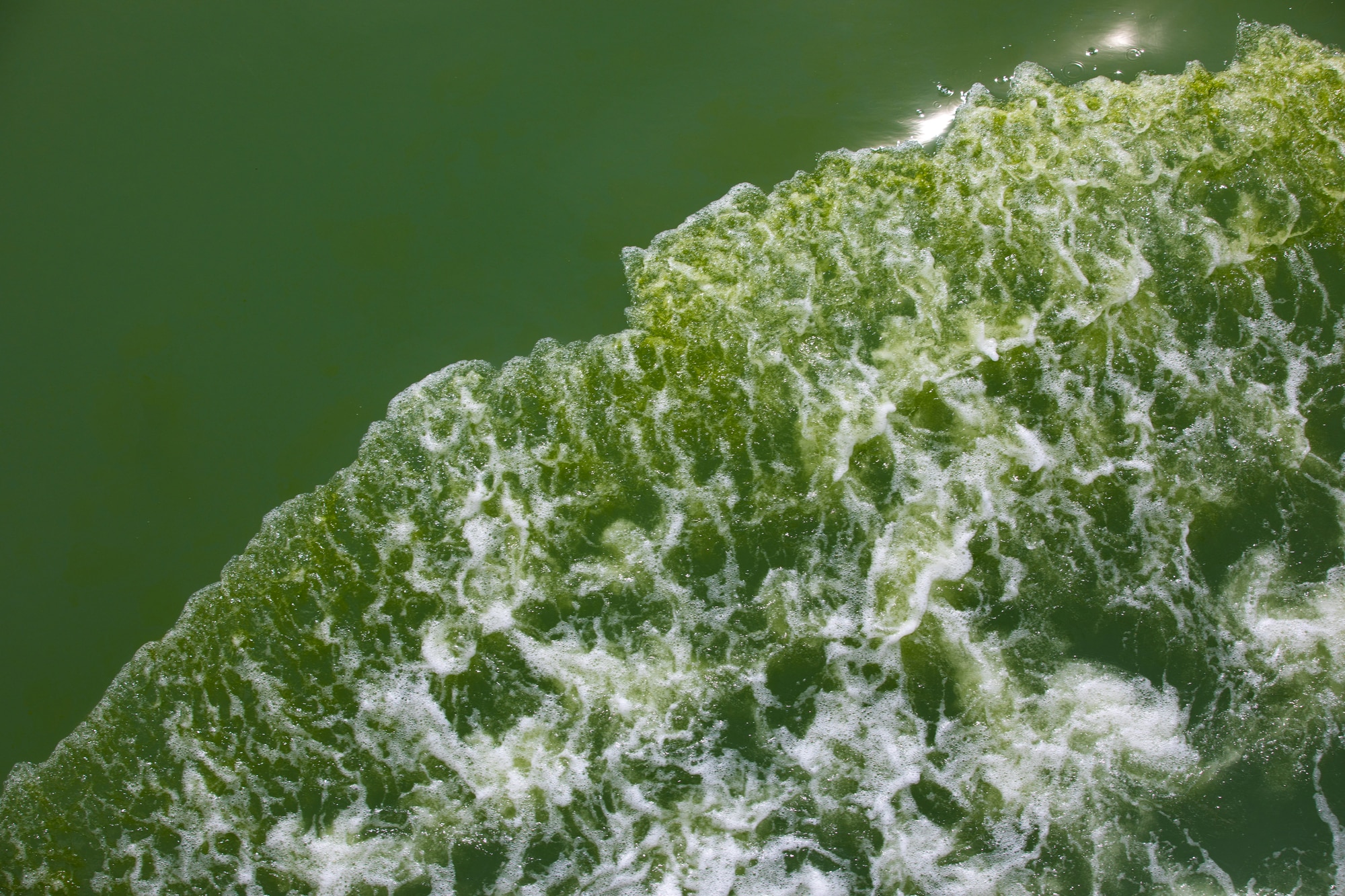
This microscopic plant floats in the ocean and is an integral part of the ocean food chain.
Phytoplankton are single-celled algae that are found in both freshwater and marine environments.
They are the primary producers of organic matter in the ocean.
Despite their small size, they are also responsible for producing most of the oxygen in the atmosphere.
In addition, they are sensitive to changes in the ocean environment, such as changes in temperature and nutrient levels, and can be used as indicators of environmental change.
Phytoplankton are also crucial for their role in the carbon cycle, as they absorb carbon dioxide from the atmosphere and help regulate the Earth’s climate.
Phytoplankton are also an important food source for many marine animals, including whales and krill.
2. Seaweed

Seaweeds, also known as macroalgae, are larger and more complex than phytoplankton.
They come in various colors like green, red, and brown, and forms ranging from delicate filamentous algae to large kelp forests.
Seaweed is known as a type of algae that can be found in both fresh and saltwater.
Seaweeds require solid substrates such as rocks or the ocean floor to attach themselves to, enabling them to withstand the constant movement of water.
Some seaweeds possess gas-filled bladders, allowing them to float closer to the ocean’s surface and receive ample sunlight.
This seaweed plant has led to a practice known as seaweed farming. This practice involves cultivating seaweed in the ocean for use in food, cosmetics, and other products.
Seaweed farming is considered a sustainable practice that can help reduce the impact of traditional agriculture and fishing practices on the ocean.
3. Seagrass

Unlike seaweeds, seagrasses are flowering plants adapted to live submerged in shallow coastal waters.
They form extensive underwater meadows, providing habitats for a wide range of marine life, such as sea turtles and fish.
Seagrasses have long, ribbon-like leaves that capture sunlight for photosynthesis. Their roots anchor them to the sediment and stabilize the substrate, preventing erosion.
Furthermore, seagrass beds are important carbon sinks and help purify coastal waters by filtering pollutants.
Seagrass helps to stabilize sediments and prevent erosion. They also help to filter pollutants from the water.
Seagrasses are also an important food source for many marine animals, including manatees.
In addition, they are sensitive to changes in the ocean environment, such as temperature and water quality.
Lastly, seagrass are important in the carbon cycle, as they help regulate the Earth’s climate.
4. Mangrove

Mangroves are unique trees that grow along coastal areas in tropical and subtropical regions.
Although not entirely submerged in water, we still consider them as one of the types of plants in the ocean; why? Because they thrive in brackish, intertidal zones where land and sea meet.
Mangroves possess specialized adaptations, such as aerial roots and salt-filtering mechanisms, to cope with the challenging conditions of their environment.
These dense forests provide essential nursery habitats for juvenile fish, protect coastlines from erosion, and support diverse ecosystems.
They are vital for stabilizing shorelines and providing habitats for marine life. They are also known to filter pollutants from the water.
5. Floating Plant
Floating plants, such as water hyacinths and duckweed, reside on the surface ocean.
They are not attached to the seabed and move freely with ocean currents.
These plants often have long roots that dangle beneath the water, providing shelter and food for various organisms.
Although these plants are relatively small, they can form extensive mats that serve as breeding grounds for fish and help regulate water temperature.
6. Giant Kelp
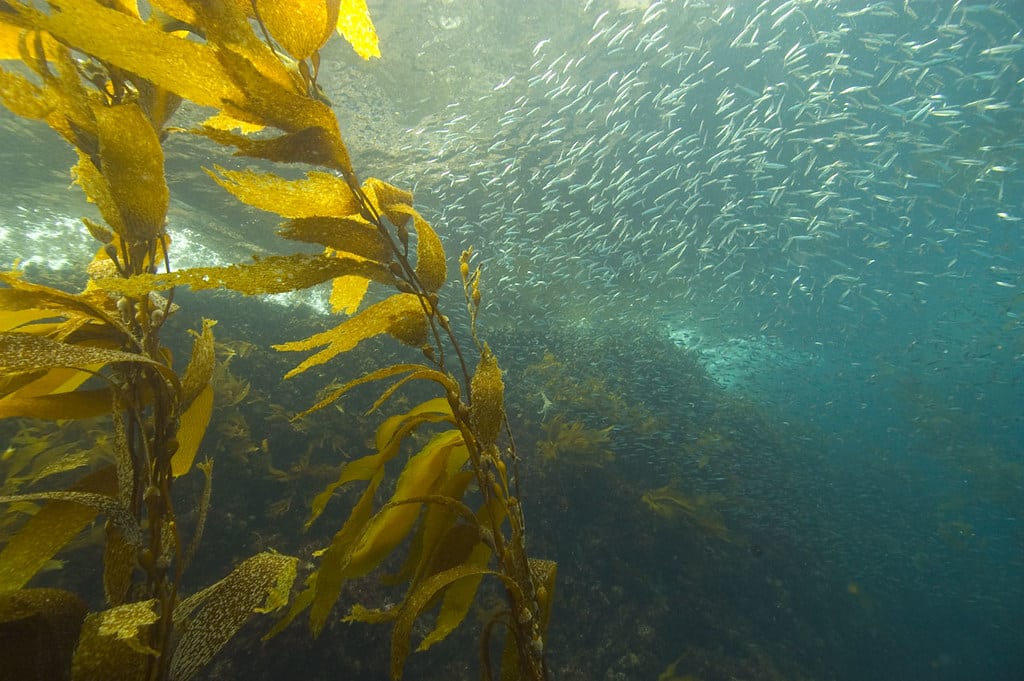
It is a type of brown algae that can grow up to 150 feet in length and is found in cold, nutrient-rich waters along the coasts of California, Australia, South Africa, and so on.
Giant kelp forests, as one of the types of plants in the ocean, provide habitats for many different types of marine life, including sea otters and sea urchins.
They also help to absorb carbon dioxide from the atmosphere and can be used to produce biofuels.
7. Red Mangrove

These trees grow in shallow water areas along the coasts of tropical and subtropical regions.
They are important for their ability to stabilize shorelines and also provide habitats for marine life.
Red mangroves are also used in traditional medicine to treat various illnesses.
8. Coralline Algae
Coralline algae are one of the interesting ones. These algae are found in shallow waters around the world.
They are essential for their role in building and maintaining coral reefs.
Coralline algae produce a hard, calcium carbonate skeleton that helps to provide structure and stability to coral reefs.
They create a very rigid, calcified skeleton that helps to protect them from predators and the forces of the ocean, which also help to absorb carbon dioxide from the atmosphere.
These plants can be used to produce biofuels and other products. Lastly, Coralline algae are also used in traditional medicine to treat various ailments.
9. Halophyte
Another one of the types of plants in the ocean is the Halophyte. Halophytes are plants that are adapted to grow in salty environments.
Salty environments such as salt marshes and mangrove swamps. They are essential for stabilizing shorelines and providing habitats for marine life.
They also help filter pollutants from the water. Halophytes are also used in traditional medicine as treatments.
10. Red Algae
Another plant In the ocean can be found in shallow waters. They produce a red pigment that helps to protect them from the sun’s harmful Ultraviolet rays.
They also make a variety of compounds that have potential uses in medicine and industry.
Red Algae can produce agar, a gelatin-like substance used in laboratory research and the production of many household products.
Red Algae are also used in traditional medicine to treat various ailments like inflammation, infections, and digestive disorders.
11. Ulva (Sea Lettuce)
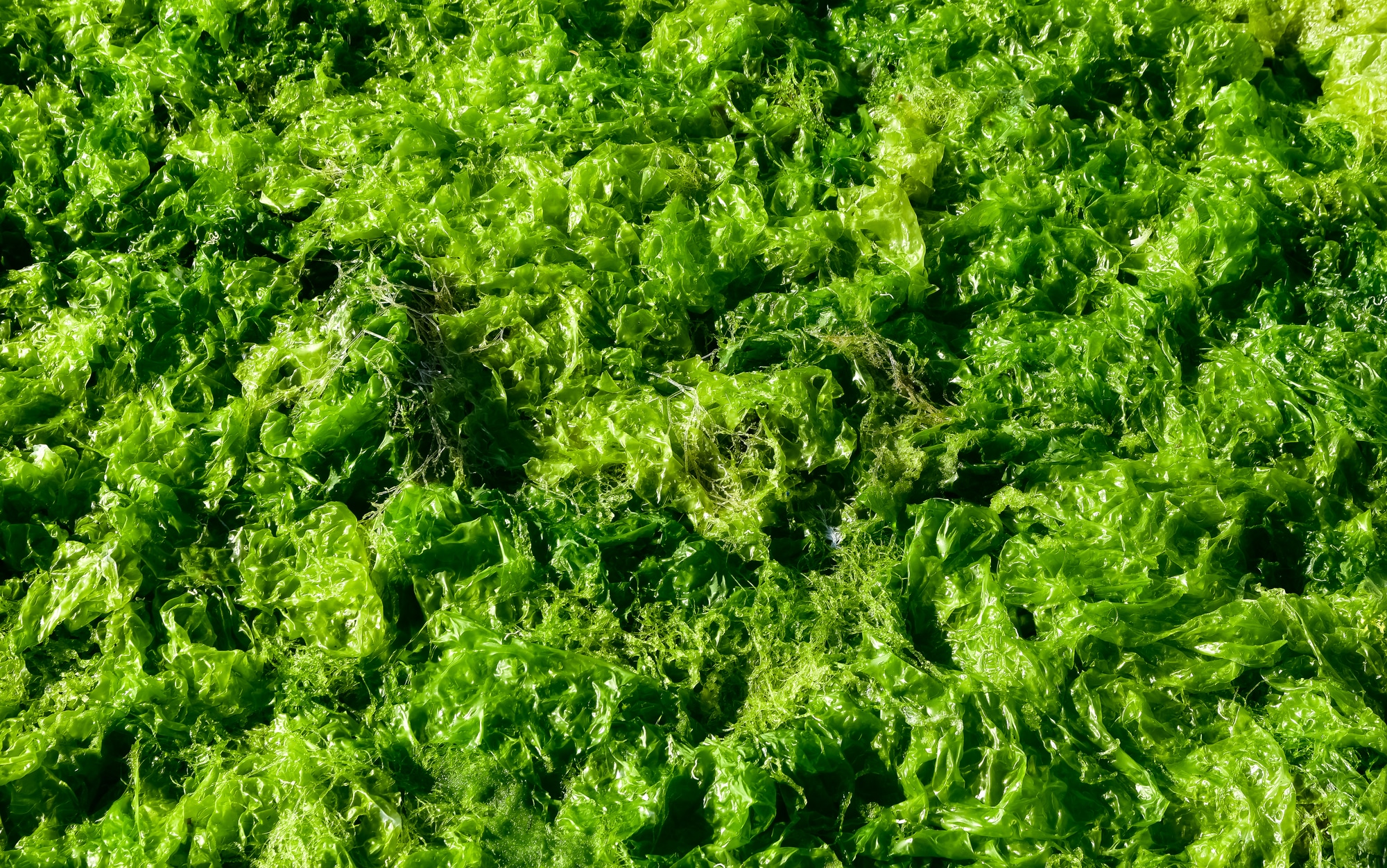
Another type of ocean plant is the Ulva, also known as sea lettuce. Ulva is a type of green algae found in freshwater and marine environments.
It is essential for its ability to produce oxygen through photosynthesis.
It is also an important food source for many marine animals, including sea slugs, hares, crabs, and sea urchins.
Ulva is also used in traditional medicine to treat various ailments, including respiratory and digestive disorders.
12. Diatom
Diatoms are single-celled algae that are found in both freshwater and marine regions.
They are essential for their ability to produce oxygen through photosynthesis, and they also play a vital role in the carbon cycle by absorbing carbon dioxide.
Diatoms are also used in a variety of industrial applications, including water filtration and the production of several materials.
13. Halimeda
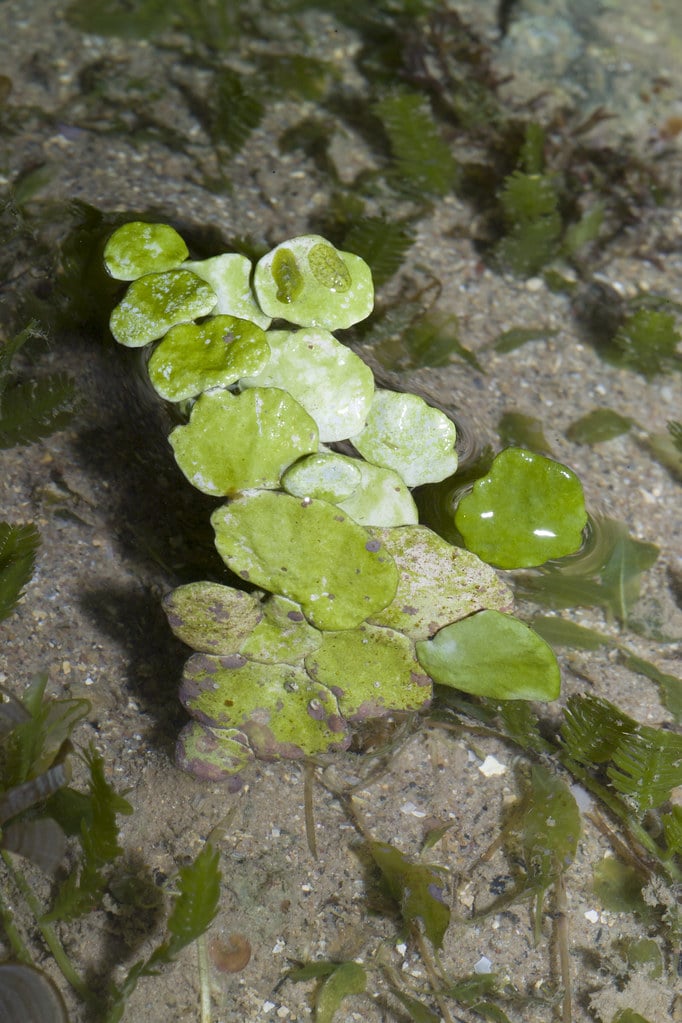
Halimeda is another exciting one of the types of plants in the ocean.
It is a type of green algae found in shallow waters worldwide (tropical and subtropical regions).
It is essential for its ability to provide habitats for many different types of marine life, including sea urchins, fish, and crustaceans.
Halimeda also helps absorb carbon dioxide from the atmosphere and can be used to produce biofuels and other products.
It is important for its ability to produce calcium carbonate, which can help to build coral reefs and other structures.
Halimeda is also an important food source for many marine animals, including sea turtles and parrotfish.
14. Sargassum

Another type of ocean plant is the Sargassum. Sargassum is a brown algae found in the Sargasso Sea, a known region of the Atlantic Ocean.
It is important for its ability to provide habitats for different types of marine life, including sea turtles, fish, and crustaceans.
Sargassum also helps absorb carbon dioxide from the atmosphere and can be used to produce biofuels and other products.
15. Eelgrass
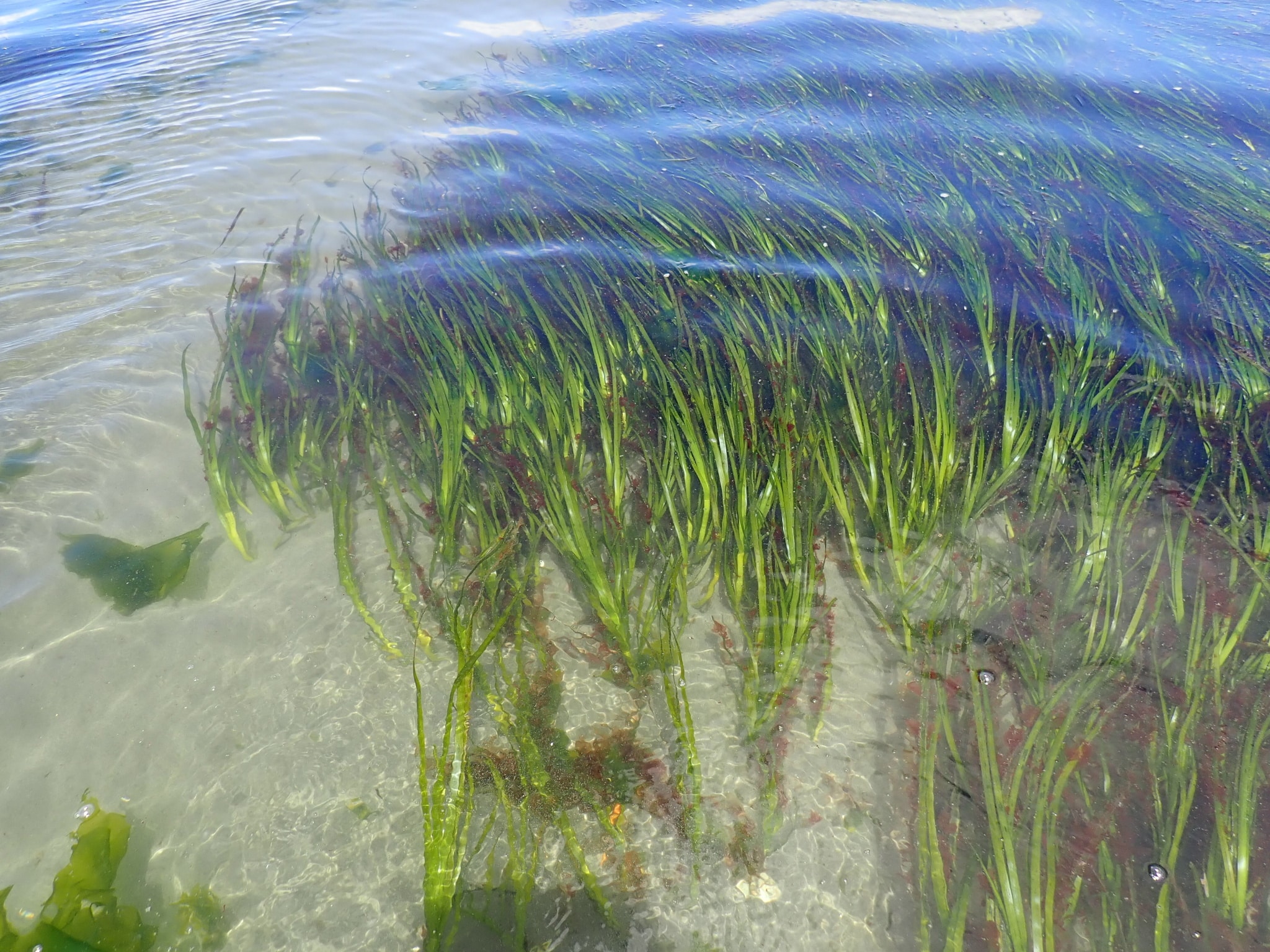
Eelgrass is a type of flowering plant that is found in shallow, brackish waters around the world.
It is important for its ability to provide habitats for many different types of marine life, including fish, crustaceans, and sea turtles.
Eelgrass also helps stabilize sediments, prevent erosion, and improve water quality by absorbing nutrients and pollutants. Another type of ocean plant is the mangrove.
16. Caulerpa
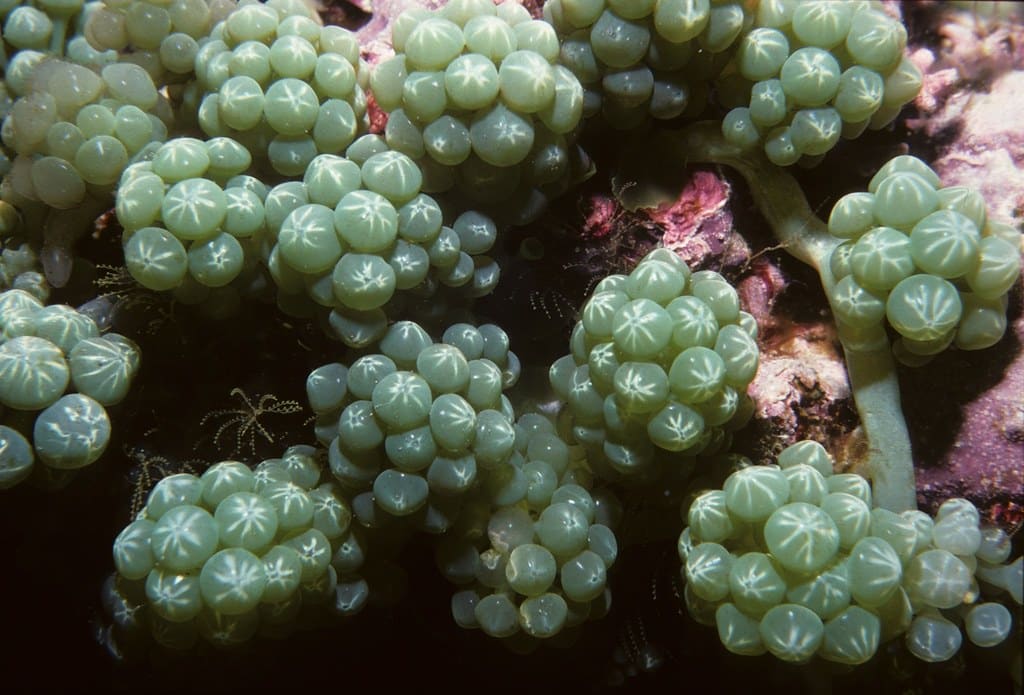
Caulerpa is a type of green algae found in freshwater and marine environments.
It is important for its ability to produce oxygen through photosynthesis and is also an important food source for many marine animals, including sea slugs and sea hares.
Caulerpa is also used in traditional medicine to treat various ailments, including respiratory and digestive disorders.
Conclusion
After thoroughly delving into the various types of plants in the ocean, it can now be deduced that oceanic plants encompass a wide range of species; each adapted to thrive in its specific marine environment.
From microscopic phytoplankton to sprawling seagrass meadows and mangrove forests, these plants play vital roles in oxygen production, carbon cycle, habitat provision, and overall ecosystem health.
Understanding and preserving the diversity of oceanic plants is essential for the conservation and sustainability of our planet’s marine ecosystems.
By recognizing the significance of these often overlooked organisms, we can foster a deeper appreciation for the wonders of our oceans and work towards their protection.




